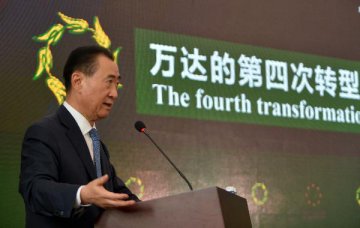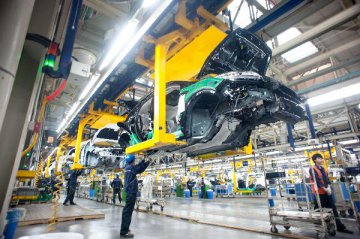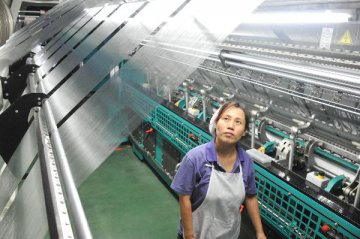
KPMG’s Global China Practice (GCP) recently published China Outlook 2016 indicates that China’s transition from an investment- and export-led growth model to one driven by consumption and innovation has led to the emergence of a two-track economy. The first track, in basic manufacturing and traditional industries, is experiencing significant headwinds, while the second, in services, advanced manufacturing and consumer markets is exhibiting strong growth potential.
“Properly understanding the objectives of China’s economic development, the policy settings which are being implemented to steer this transition, and the progress which has already been made, are all key to understanding the drivers, trends and outlook for Chinese investment overseas, and for foreign investment in China,” says Vaughn Barber, Global Chair of KPMG’s GCP.
The Chinese government introduced a number of major policy initiatives in 2015 to facilitate the country’s economic transformation, tackle overcapacity issues, increase productivity, promote innovation and entrepreneurship, and enhance the international competitiveness of China’s traditional industries. Importantly, rather than focusing on the speed of growth, these initiatives place importance on the quality of growth in order to achieve a more balanced level of development that is conducive to long-term prosperity. This is expected to continue to be a feature of China’s policies over the next few years, especially following the release of the 13th Five-Year Plan in March 2016.
“China’s adjustment is taking place in a slower-growth environment, which, taken together with other competitive and market factors, is presenting significant challenges for business. At the same time, we see new growth opportunities in sectors whose development will assist in China’s economic transformation, and the government is channelling investment into these areas,” says Thomas Stanley from KPMG.
In reviewing Chinese Overseas Direct Investment (ODI), Chinese non-financial outbound investment hit a record high of USD 118.02 billion in 2015, recording a 14.7 percent year-on-year increase. The value of announced deals recorded a 40 percent increase over the same period to reach USD 87.7 billion. Given this rapid growth, Chinese outbound M&A may be on track to surpass the USD 100 billion mark this year. Indeed, the first few weeks of 2016 showed no signs of this trend abating, with a staggering USD 74.8 billion of deals being announced in the period up to 18 February. Chinese outbound M&A activity continued to be focused on ‘quality growth’ with not only more, but also larger deals being announced in high value-added and consumption-related sectors. Consistent with this, more deals were done in developed markets, with many involving privately-owned enterprises (POEs).
KPMG’s GCP expects China’s ODI will continue to grow by more than 10 percent per annum, driven by factors including Chinese companies’ desire to acquire experience, technology, brands and human capital to become more competitive, and to access high-quality products and services that can be deployed in China to meet its evolving consumption trends. Agriculture and food, infrastructure, high-end manufacturing and real estate will continue to be important sectors in 2016, while ICT, healthcare and transportation are new “hot” sectors to watch.
KPMG’s GCP also predicts more overseas investment by POEs and financial investors, as well as more win-win cooperation between Chinese and foreign companies. “A key feature of the ‘new normal’ for China’s relations with the rest of the world is ‘cooperation’ and ‘collaboration’, both in China and in markets outside China, to the mutual benefit of China, the partnering countries and the third-country markets,” says Vaughn Barber.
Careful attention should be paid to three positive drivers of Chinese ODI in 2016, namely China’s advancement of a new paradigm of international cooperation – through its ‘Belt and Road’ initiative for example, the emergence of new funding sources, and the implementation of the recent free trade agreements with Australia and South Korea.
China Outlook 2016 finds that non-financial FDI into China in 2015 increased by 6.4 percent year-on-year to reach an all-time high of USD 126.3 billion. There were fewer but larger inbound M&A deals, representing an increase in average deal size as higher value, more expensive Chinese companies were acquired.
In line with the emergence of a two-track economy in China, the service sector represented 61.1 percent of total FDI in 2015, while FDI into manufacturing accounted for 31.4 percent. As a comparison, 63.6 percent of China’s total FDI went into the manufacturing industry in 2006, while the service sector attracted 31.1 percent.
According to KPMG’s GCP, the Chinese government has launched a number of policies and initiatives to encourage FDI in 2016 and beyond. These present significant opportunities for companies with targeted, well-positioned value propositions that deliver against emerging customer needs while simultaneously delivering a strong value proposition to the government’s development goals. Government spending will pivot to the ‘lean, clean and green’ categories that seek to improve healthcare coverage, reduce environmental impact, strengthen food safety and security, and ameliorate pollution conditions. The service sector will continue to grow, with e-commerce and logistics driving FDI opportunities. High-tech manufacturing will be another important sector, while the healthcare and environment sectors are areas to watch in 2016.
Recent policy publications indicate authorities are committed to opening up the service and manufacturing sectors to foreign capital, and loosening restrictions in the finance sector. China’s FTAs with Australia and South Korea, the establishment of new Free Trade Zones (FTZs) in Guangdong, Fujian and Tianjin, and the expansion of the Shanghai FTZ will assist in this process. Likewise, authorities are trying to leverage the latest advances in information communication technology, advanced manufacturing and automation technologies to increase the productivity of the country’s traditional industries, bringing opportunities to foreign companies with expertise in these fields. The deepening of China’s SOE reform should lead to more acquisition targets for, as well as wider market access to, foreign companies.
























Latest comments